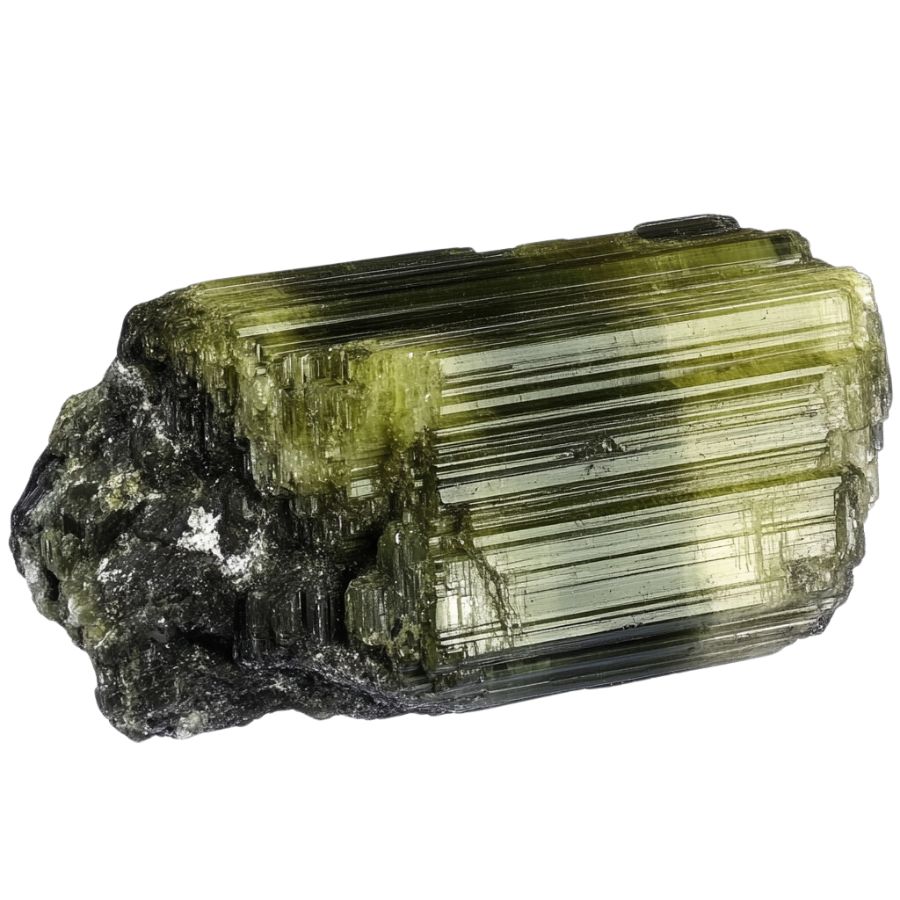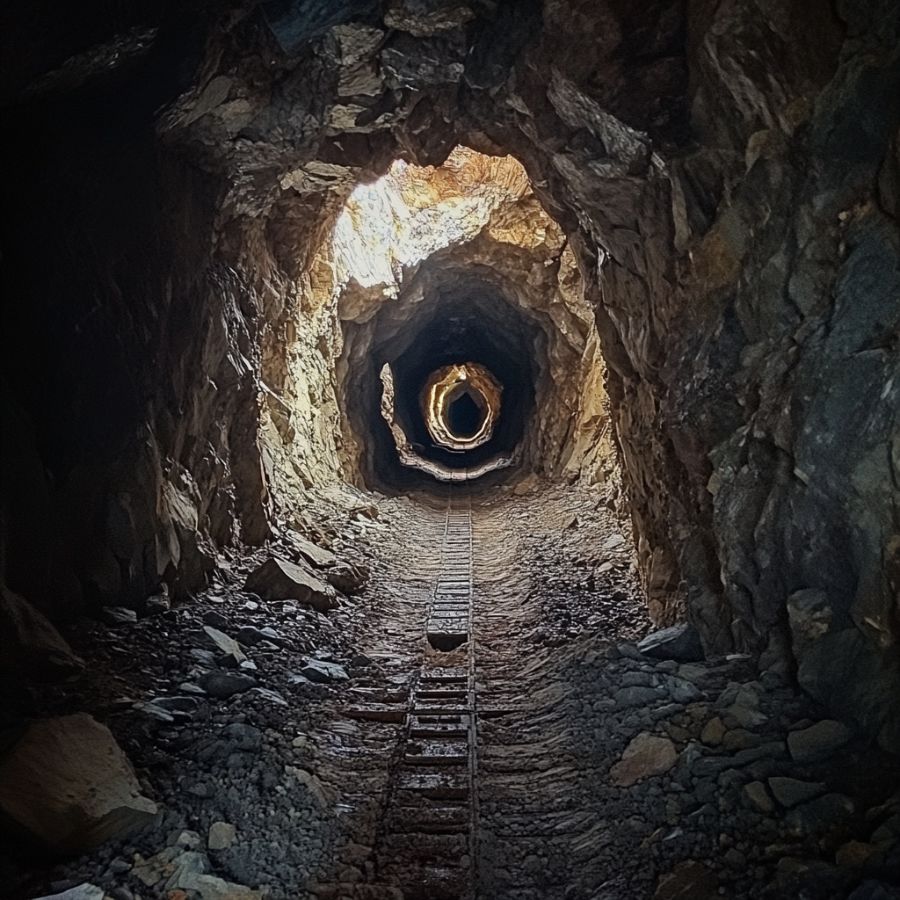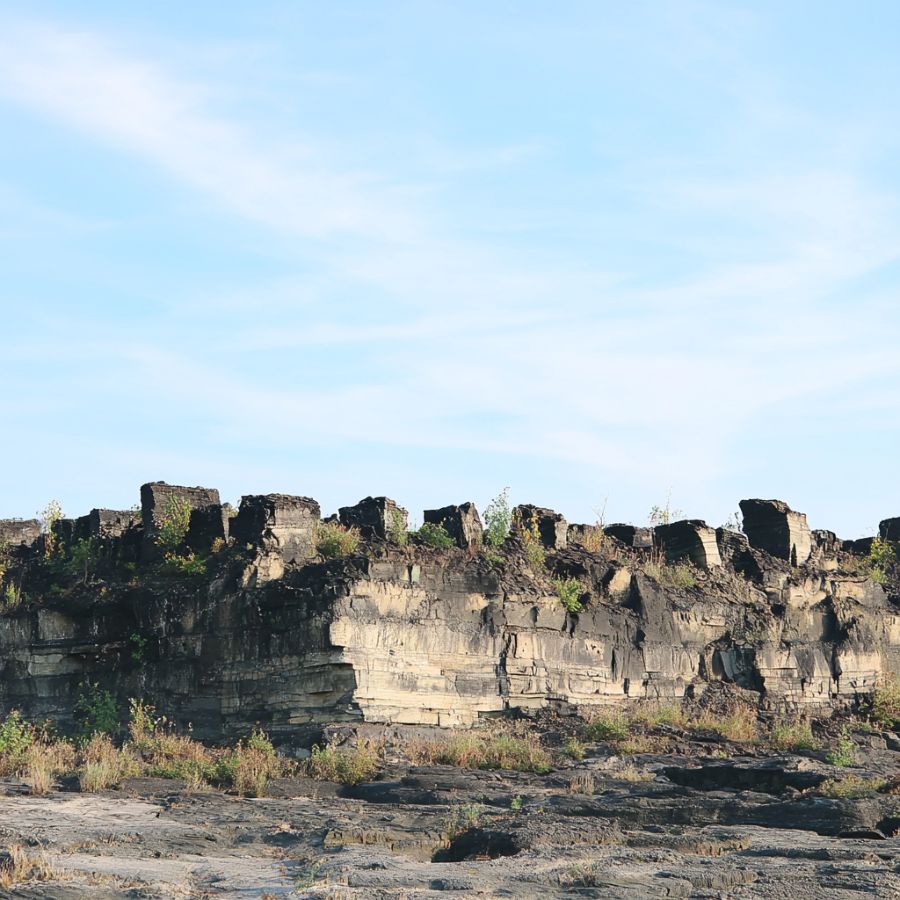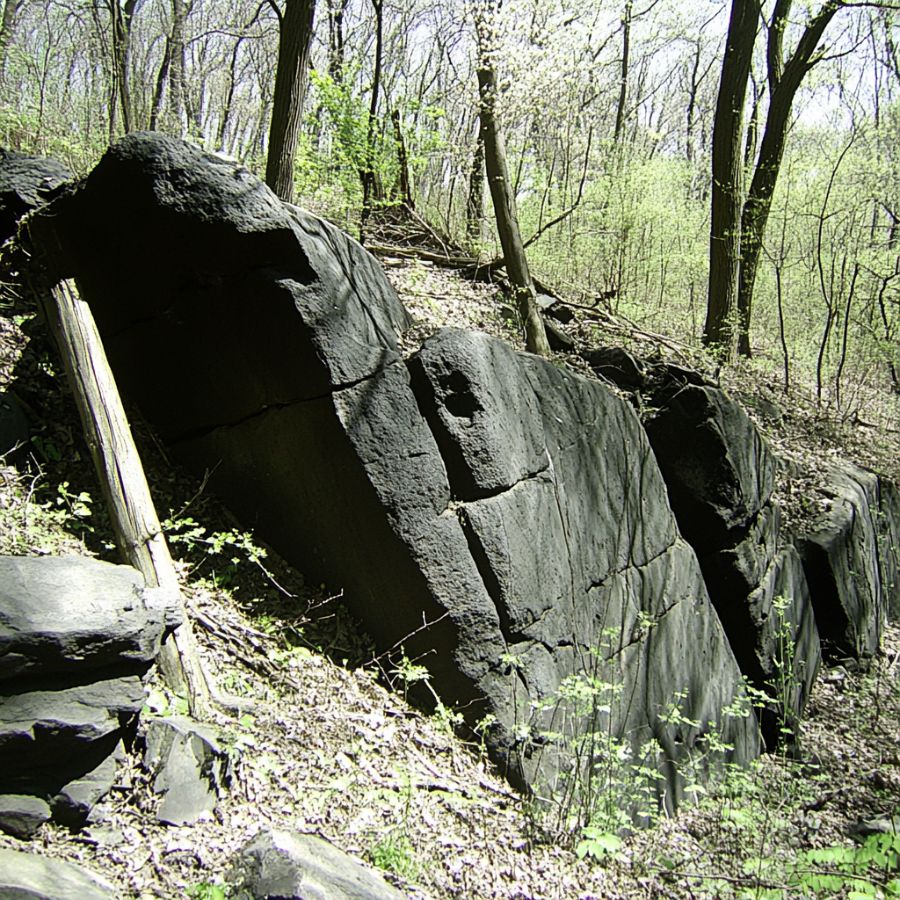From the Delaware River to the Atlantic Ocean, from New York’s bustling border to Pennsylvania’s rolling hills, New Jersey offers hidden gems for rock enthusiasts.
But searching for tourmaline can be frustrating and time-consuming if you don’t know the right places. You might spend hours in the wrong locations, coming up empty-handed.
But don’t worry! We’ve done the hard work for you. This article reveals 18 prime spots to find tourmaline in the Garden State.
We’ve sourced the best locations to save you time and energy. No more wasted trips or disappointing searches.
How Tourmaline Forms Here

Tourmaline forms deep underground through intense heat and pressure. It originates from hot, mineral-rich fluids that move through fractures in rocks like granite and pegmatite. As these fluids cool, the minerals within them start to crystallize, forming tourmaline.
The color of tourmaline depends on the specific minerals involved, leading to a wide range of hues including pink, red, green, and blue.
Over millions of years, these crystals grow and become the beautiful, multifaceted stones we see today. Tourmaline is prized for its variety of colors and is often used in jewelry and decorative items.
The Types Of Tourmaline
Several incredible types of Tourmaline can be found in the US as well as in our state. Each is uniquely beautiful and interesting including:
Elbaite

Elbaite is found in pink, red, green, blue, yellow, and even colorless forms. What makes elbaite special is its ability to show multiple colors in a single crystal, like the famous “watermelon” tourmaline with pink and green hues.
This gem stands out due to its complex chemical makeup, which includes lithium, sodium, and aluminum. This composition gives Elbaite its diverse color range and dichroism, allowing it to display different colors when viewed from different angles.
Elbaite has a unique place in history as the first tourmaline variety in which lithium was discovered back in 1818. Some rare types, like the neon blue Paraiba elbaite, are highly sought after by collectors and jewelers.
Schorl

Schorl is known for its deep, rich color. It typically forms long, prismatic crystals with a shiny, glass-like surface when polished. Unlike other tourmalines, schorl gets its distinctive black color from high iron concentrations.
One of Schorl’s most fascinating features is its ability to become electrically charged through heating or rubbing. When charged, it can attract or repel small particles.
This unique electrical property makes Schorl valuable in various industries. It’s used in electronics and manufacturing to control static electricity and electromagnetic interference.
Despite being less colorful than other tourmalines, schorl’s practical applications make it an important and interesting variety.
Rubellite

Rubellite stands out with its vibrant pink to red colors. The most prized ones show a pure, saturated red without any brown or orange hints. This beautiful color comes from manganese in its makeup.
One cool thing about rubellite is its double refraction. It can look like it has two different colors when you view it from different angles.
Dravite

Dravite, or Brown Tourmaline, comes in shades from dark brown to light brown-yellow. It can look a bit like Smoky Quartz, with a semi-see-through quality.
Its crystals are often needle-like or prismatic, with points at both ends. This sets it apart from other tourmalines like the darker schorl or the colorful elbaite.
What makes dravite special is its rich sodium and magnesium content. This sets it apart from other tourmalines. It was first discovered in 1883 and named after the Drava River in Slovenia.
Indicolite

Indicolite is a rare and captivating blue to blue-green stone. It’s prized for its pure, bright blue color, which is considered the rarest within the tourmaline family. The hues can range from light blue-green to deep, rich blue, often with high clarity.
What sets Indicolite apart is its unique optical effects. It shows pleochroism, appearing to change color when viewed from different angles. Some specimens also display chatoyancy, creating a “cat’s eye” effect when cut in a certain way.
Indicolite is sometimes called “Brazilian sapphire” due to its resemblance to the precious gem. However, they’re different minerals.
The increasing demand for blue tourmalines has made indicolite highly sought-after in the gemstone market, appreciated for its beauty and rarity.
Watermelon Tourmaline

Watermelon tourmaline is truly one-of-a-kind. It looks just like a slice of watermelon, with a pink or red center and a green outer layer. This unique look happens because different elements join the crystal at different times as it grows.
These crystals often form in a rounded triangle shape. They’re see-through to somewhat clear and have a glass-like shine. When cut into slices, they really do look like little watermelons!
Cat’s Eye Tourmaline

Cat’s eye tourmaline is known for its mesmerizing chatoyancy effect. This creates a bright band across the stone’s surface, resembling a cat’s eye.
This stone comes in various colors, from green to pink to brown, and is usually semi-translucent to opaque.
What makes this stone special is the perfect alignment of tiny, needle-like inclusions inside it. These scatter light in a unique way, creating that eye-catching effect. It’s quite different from other tourmalines that don’t have this feature.
Unlike other cat’s eye stones, Tourmaline offers a wider range of colors and is often more affordable.
Achroite

Achroite is a rare, colorless variety of tourmaline that looks like a drop of clear water turned to stone. It’s completely transparent, making it unique among tourmalines which usually have color. The name comes from Greek, meaning “without color.”
What’s special about achroite is that it doesn’t change color when viewed from different angles. It means the stone can be cut in many ways without losing its clarity.
Verdelite

Verdelite is known for its beautiful green color. It can range from light green to deep emerald.
One thing that makes verdelite special is that you can find big, clear crystals of it. This isn’t always easy with other gemstones.
People love using verdelite in jewelry because its rich color and interesting light effects make it a popular choice for all kinds of accessories. Each piece of verdelite is like a little piece of nature you can wear.
Paraíba Tourmaline

Paraíba Tourmaline is a rare gemstone that catches the eye with its vibrant neon blue or green color. It’s like no other tourmaline you’ve seen before. The intense glow comes from copper in the stone, making it stand out from its cousins.
This stone is one of the rarest. For every 10,000 diamonds mined, only one Paraíba tourmaline is found.
It was only discovered in the late 1980s, making it a newcomer in the gem world. But Paraíba tourmaline’s unique color and rarity quickly made it a favorite among gem lovers.
Its discovery caused quite a stir in the gem community. Even small stones can be valuable because of how rare and beautiful they are.
What Rough Tourmaline Looks Like
When you’re out looking for rough Tourmaline on your own it’s important to know what you’re looking for. Here are some tips to help you recognize rough tourmaline.
Look for Color Variations

Tourmaline comes in many colors, like pink, green, blue, and even black. Some pieces have multiple colors, like watermelon tourmaline, which is pink and green.
If you see these color mixes, it’s likely tourmaline. Keep an eye out for vibrant shades.
Assess the Density and Weight

Rough tourmaline is relatively heavy for its size. If you pick up a piece and it feels denser than expected, it could be tourmaline. This weight can help you confirm your find.
Examine the Crystal Structure

Tourmaline features distinctive crystal shapes, ranging from slender and elongated to chunky forms. Look for triangular cross-sections and striations on the surface, which indicate its unique growth patterns.
Check for Transparency

Some rough tourmaline can be slightly transparent. If you hold it up to the light, you might see through it a bit. This transparency can be a good sign that you have tourmaline.
A Quick Request About Collecting
Always Confirm Access and Collection Rules!
Before heading out to any of the locations on our list you need to confirm access requirements and collection rules for both public and private locations directly with the location. We haven’t personally verified every location and the access requirements and collection rules often change without notice.
Many of the locations we mention will not allow collecting but are still great places for those who love to find beautiful rocks and minerals in the wild without keeping them. We also can’t guarantee you will find anything in these locations since they are constantly changing.
Always get updated information directly from the source ahead of time to ensure responsible rockhounding. If you want even more current options it’s always a good idea to contact local rock and mineral clubs and groups
Tips on where to look
Once you get to the places we have listed below there are some things you should keep in mind when you’re searching:
Look for Sedimentary Rocks

Sedimentary rocks are great places to find tourmaline. These rocks form from layers of sand, mud, and minerals. Over time, minerals like tourmaline can get trapped.
Look in riverbeds or areas where sediment has built up. You might find small pieces or even larger crystals.
Explore Mines

Mines are great spots to find tourmaline. Many mines across the U.S. extract various gemstones, including tourmaline.
Some mines even allow visitors to search for gems themselves. Always check if they have guided tours or special digging days.
Search in Gravel Pits

Gravel pits are often overlooked, but they can be treasure troves. These pits dig deep into the earth, exposing layers of rock.
Tourmaline can be found in the gravel. Just sift through the material carefully.
The types of Tourmaline can you find around the state
New Jersey is home to various types of tourmaline, with notable varieties including achroite and black tourmaline. Achroite is a colorless form of tourmaline, prized for its clarity and rarity, making it a sought-after gemstone for collectors and jewelry enthusiasts.
Black tourmaline, often referred to as schorl, is the most common variety found in the state. It is characterized by its opaque black color and is valued for its aesthetic appeal.
The diverse range of tourmaline found in the state reflects the mineral’s complex composition and the geological conditions that allow for its formation, making New Jersey a noteworthy location for gem hunters and mineral collectors alike.
Some Great Places To Start
Tourmaline can be found in various locations across New Jersey. Some of the best places to search for tourmaline include:
Always Confirm Access and Collection Rules!
Before heading out to any of the locations on our list you need to confirm access requirements and collection rules for both public and private locations directly with the location. We haven’t personally verified every location and the access requirements and collection rules often change without notice.
Many of the locations we mention will not allow collecting but are still great places for those who love to find beautiful rocks and minerals in the wild without keeping them. We also can’t guarantee you will find anything in these locations since they are constantly changing.
Always get updated information directly from the source ahead of time to ensure responsible rockhounding. If you want even more current options it’s always a good idea to contact local rock and mineral clubs and groups
Lambertville Quarry

Lambertville Quarry sits about 2 miles north of Lambertville’s center, just 300 feet east of the Delaware River. The quarry is part of the Mt. Gilboa diabase, a segment of the Palisades intrusive complex.
What makes Lambertville Quarry special is its unique geological history. In the 1940s, an irregular cavity exposed ferroaxinite, a rare find in the area.
This cavity, formed in diabase pegmatite, also yielded actinolite, prehnite, epidote, and tourmaline. The quarry’s central portion boasts a very coarse-grained diabase with significant granophyre content.
This unique composition creates an ideal environment for mineral formation. Tourmaline can be found in crevices and altered granophyre surrounding open spaces.
While the quarry has seen less scientific attention since the 1960s, its geological significance remains. The presence of boron-enriched fluids and the possible incorporation of Lockatong argillite add to its mineralogical intrigue.
Sourland Mountain

Sourland Mountain, a rugged ridge in central New Jersey, stretches from the Delaware River to Hillsborough Township. This geologically unique area is part of the 6,000-acre Sourland Mountain Preserve.
The mountain’s foundation is a diabase intrusion known as the Lambertville Sill, a faulted segment of the Palisades intrusive. Tourmaline has been discovered in this area, making it an exciting spot for gem enthusiasts.
The mountain’s extensive boulder fields and rocky outcrops, formed from diabase rock, create ideal conditions for mineral formation. These geological features make Sourland Mountain a prime location for rockhounding.
While exploring, focus on the rocky cliffs and boulder fields, as these are hotspots for finding tourmaline and other minerals. The preserve’s meandering streams also offer potential for discoveries.
Interestingly, Sourland Mountain is more infamous for its connection to the Lindbergh baby kidnapping case of 1932 than for its mineral wealth.
Sparta Junction

Nestled in the western part of Sparta Township, Sparta Junction is a hidden gem for rockhounds. This historic railroad junction, situated at the southern end of Germany Flats, offers more than just scenic views.
Sparta Junction’s surroundings boast a fascinating mining history, with deposits of iron, zinc, and limestone. This mineral-rich environment creates ideal conditions for tourmaline formation.
Enthusiasts can explore the gravels and creeks near the old railroad tracks, where these colorful crystals often hide.
The junction’s unique location at the crossroads of historical transportation routes adds to its allure. As you search, you might stumble upon remnants of the area’s industrial past, adding an element of time travel to your gemstone adventure.
Goat Hill Quarry

Goat Hill Quarry is located on a steep hillside above State Highway 29 in West Amwell Township, Hunterdon County. This shallow quarry, part of the Lambertville Sill, rises dramatically above the Delaware River.
Once a source for Belgian blocks (cobblestones), it now attracts mineral enthusiasts with its rich geological offerings.
The quarry’s diabase stone, part of a 1,300-foot-thick sill, creates an ideal environment for diverse mineral formation. Tourmaline, the prized gem, can be found among the quarry walls and scattered uncut blocks.
The site’s unique geology, linked to the Palisades intrusive complex, has yielded a significant number of secondary mineral species.
Rockhounds can explore the remnants of old loading docks made from diabase blocks along the road. The quarry’s shallow depth and exposed rock faces offer ample opportunities for discovery.
Passaic Pit

Nestled in the northwest corner of New Jersey, the Passaic Pit in Sterling Hill is a rockhound’s paradise. This former open-cut mine, dating back to the 1870s, is now part of the Sterling Hill Mining Museum.
What makes this site special is its incredible fluorescent minerals. When exposed to ultraviolet light, many rocks here glow in vibrant colors, creating a spectacular underground light show. This unique feature attracts geology enthusiasts from far and wide.
Tourmaline hunters can search through the weathered zinc ores and secondary mineral formations. The pit’s distinctive geology, shaped by ancient volcanic activity, creates ideal conditions for gemstone formation.
Keep an eye out for hemimorphite “maggot” ore, a telltale sign you’re in the right spot for finding interesting minerals.
Places tourmaline has been found by county
After discussing our top picks, we wanted to discuss the other places on our list. Below is a list of the additional locations where we have found tourmaline in New Jersey, along with a breakdown of each place by county.
| County | Location |
| Bergen | Susquehanna & Western Railroad tunnel |
| Mercer | Princeton Area |
| Middlesex | New Brunswick |
| Morris | Morristown occurrences |
| Somerset | Bridgewater Township |
| Somerset | Chimney Rock |
| Sussex | Bemco prospect in Cranberry Lake |
| Sussex | Franklin Quarry |
| Sussex | Regional draws, canyons, soils in the Franklin Area |
| Sussex | Newton Area |
| Warren | Royal Green Marble Quarry |
| Warren | Marble Mountain Prospect |
| Warren | Roadcuts and quarries in Phillipsburg area |


